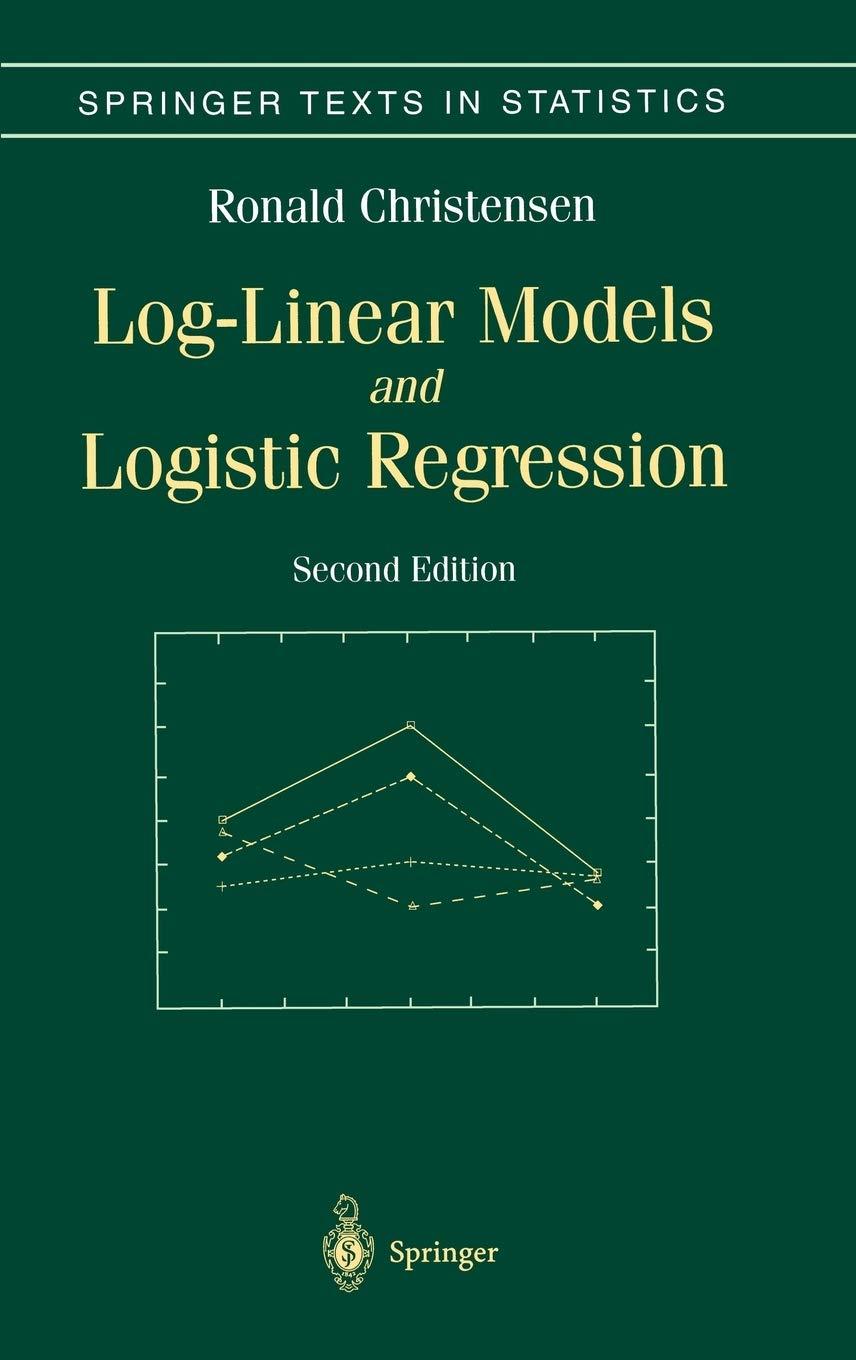Fishers Exact Test. Consider the problem of testing whether the probability of success is the same for
Question:
Fisher’s Exact Test.
Consider the problem of testing whether the probability of success is the same for two independent binomials. Let yi ∼ Bin(Ni, pi), i = 1, 2. Write the 2 × 2 table as TABLE 2.8. Partitioned Tables Reduced Table Religion A B C D E F G H White Baptist 43 78 64 135 135 57 86 114 Black Baptist 9 2 9 23 47 77 18 41 Methodist 73 80 80 117 102 58 66 153 Lutheran 23 36 43 59 46 26 49 46 Presbyterian 35 54 38 46 19 22 11 46 Episcopalian 27 27 20 14 7 5 2 15 Collapsed Table Religion A B C D E F G H Protestant 210 277 254 394 356 245 232 415 Roman Catholic 102 140 127 279 254 127 51 190 Jewish 36 60 30 17 17 2 0 26 No Religion 19 12 6 12 25 9 14 28 y1 N1 − y1 N1 y2 N2 − y2 N2 t N1 + N2 − t N1 + N2
(a) Find Pr(y1 = r1 and t = t0) for arbitrary r1 and t0.
(b) Assuming p1 = p2, find Pr(y1 = r1|t = t0).
(c) Consider the following subset of the knee injury data of Example 2.3.1 Result Injury E G Direct 3 2 Twist 7 1 Using the conditional distribution of (b), find the probability of getting the observed value 3. The P value for Fisher’s exact test is the sum of the Pr(y1 = r1|t = 10)’s for every r1 value that satisfies Pr(y1 = r1|t = 10) ≤ Pr(y1 = 3|t = 10).
Find the P value for the data given above. Note that this test does not depend on any large sample approximations, so it is exact even for small samples. On the other hand, the computations become difficult with large samples.
Step by Step Answer:

Log Linear Models And Logistic Regression
ISBN: 9780387982472
2nd Edition
Authors: Ronald Christensen






